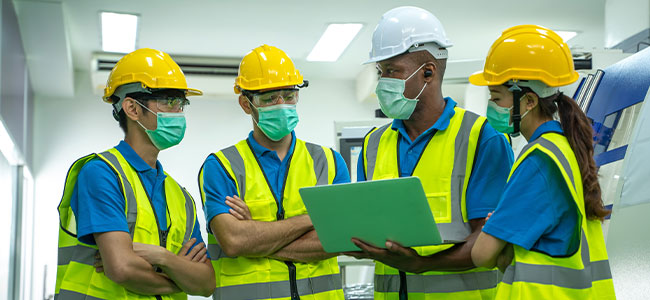
Industrial Hygiene: The Science Behind Safety
Safety on the job is no accident. Industrial hygiene is the science of protecting workers’ health and safety.
Going to work shouldn’t be dangerous. Yet, 5,486 fatal work injuries were recorded in the U.S. in 2022. The construction industry had the most workplace deaths; transportation and warehousing had the highest injury and illness rate tied to days away from work per 10,000 workers.
The three leading causes of work-related injuries/illnesses in 2021-22 were 1) Exposure to harmful substances/environments, 2) Overexertion & bodily reaction, and 3) Slips, trips & falls.
These top three hazards account for more than 75 percent of all nonfatal injuries and illnesses involving days away from work.
So, what can employers do to help keep workers safer? One way is to implement an industrial hygiene program.
What Is Industrial Hygiene?
Hygiene is the science that deals with the preservation of health. Industrial hygiene is the science of protecting workers’ health and safety. OSHA expands the definition to the science and art devoted to the anticipation, recognition, evaluation, and control of environmental factors or stresses arising in or from the workplace, which may cause sickness, impaired health and well-being, or significant discomfort among workers or the community.
The process of industrial hygiene involves identifying, analyzing and controlling workplace conditions and hazards to prevent dangerous and harmful work environments. It can help prevent potential illness, injury, and stressors at workplaces.
By incorporating industrial hygiene principles early in your planning and recognizing potential issues before they escalate, you can support the health and safety of your workers and manage your company’s exposure to potential risk and liability.
Industrial hygienists use environmental monitoring and analytical methods to detect the extent of worker exposure to hazards. They utilize engineering, work practice controls, and other methods to control potential health risks. Another common way to practice industrial hygiene is by mandating proper use of Personal Protective Equipment to improve working conditions, provide protection and mitigate workers’ exposure to hazards.
OSHA Standards
OSHA places a high priority on using industrial hygiene concepts in its health standards and as a tool to enforce regulations.
This article originally appeared in the April/May 2024 issue of Occupational Health & Safety.